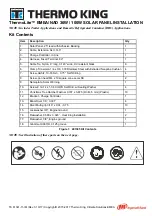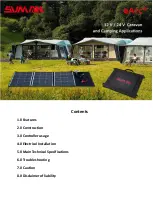
NEX7250 Zone 2 Annunciator
71
26. Systems with Serial communications
Introduction
The 725 Series alarm annunciator can be supplied with a serial communications card as an option
using either modbus ASCII or modbus RTU protocol as standard. This allows the unit to interface to
3
rd
party devices such as PLC's, DCS systems, industrial computers, SCADA packages etc. The
annunciator is RS485/RS422 compatible and can easily be converted to RS232 using a suitable
external converter. As standard the annunciator acts as a 'slave' device, but can be configured as a
master in certain applications.
Bi-Directional Communications
The 725 bi-directional communications card allows the unit to read and write data to each alarm
window, which provides alarm contact status, window illumination control/status, and pushbutton
information. Each channel can be set to alarm from hard wired signal inputs from the associated
input terminal or via serial communications as required.
Configuration
The baud rate, parity and protocol are selected by changing DIL switch settings on the
communications card
Address Selection
Each annunciator is set with a unique address from 0 to 63, which allows up to 64 separate
annunciators to be connected in a single RS485 multi-drop loop. RTK can also supply
comprehensive alarm monitoring and logging software if required.
Character Format
ASCII 7 data, 1 start, 1 stop, 1 parity
RTU
8 data, 1 start, 1 stop, 1 parity
Message Format
In accordance with the standard modbus protocols, all data exchanges are assumed to comply
strictly with these standards. ASCII transmissions will start with a colon and end with longitudinal
redundancy check (LRC), carriage return and line feed. RTU transmissions will not use framing
characters and will incorporate a cyclic redundancy check (CRC).
For further details please refer to the "Modicon modbus protocol reference guide” available from
Modbus-IDA www.modbus.org
Fault Indication
If communications cannot be established within a specified time-out period (typically 10 seconds)
then the watchdog relay on the communications card will trip and, if fitted, the "communications fault"
window will illuminate. This indicates there is a communications fault either with the external device
or with the integral alarm cards within the annunciator. Because the system continually attempts to
regain communications it will self-recover as soon as communication is re-established.
















































